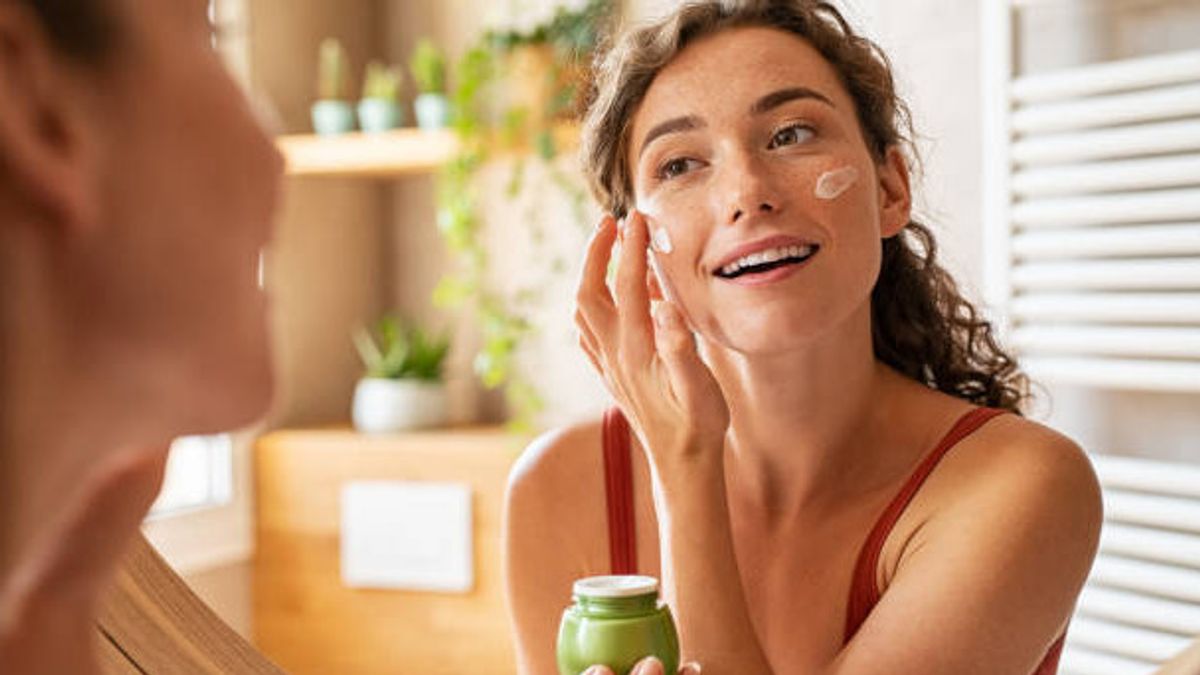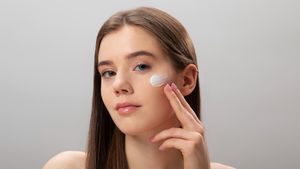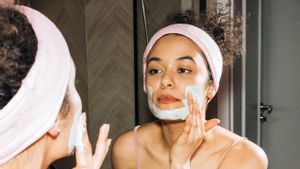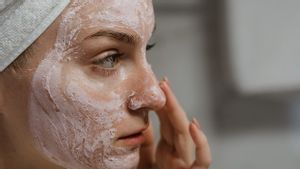JAKARTA - The term "color change" actually includes many different things, including spots of aging, melanism, or what experts call "post-inflammatory trauma" or acne scars. And regardless of the type of black spots you face, it is a common fact that spots can be one of the most difficult skin problems to overcome.
Even so, that doesn't mean all expectations for recovery are gone. By adding a combination of appropriate ingredients into skin care, dermatologist Gina Mari, facial care adviser to Noble Panacea, says you can start to see the real difference with the black spots' appearance.
"The key to reducing the appearance is not only prevention, but also the main ingredients of the product which include luminosity and exfoliant properties," said Mari.
"Because black spots are exacerbated by sun exposure, the use of SPF every day is a must in preventing damage in the future," Mari continued.
Then, how to deal with changes in skin tone that have been experienced? The following is information from Well and Good, reported Thursday, November 28, in finding materials that will give maximum results.
Dr. Lolis calls vitamin C the most famous ingredient for brightening black spots. Vitamin C is not only a powerful antioxidant, which helps protect the discotheque. But it also fixes cell damage to help reduce the appearance of existing damage.
"On the skin, vitamin C prevents and fades general hyperpigmentation disorders such as sunspots and melanma by reducing melanin production," he said.
The material is available in various forms, but the best option is to look for L-ascorbic acid, which is considered the most stable and effective choice. Dr. Lolis also recommends the use of vitamin C in serum form because it is usually more effective than cream or lotion.
Keep in mind that serum can irritate sensitive skin, so Dr. Lolis suggests starting with low concentration (about 10 percent) and doing a patch test before applying it to the whole face.
Hydroquinon, which is usually used as a bleaching cream, is highly recommended by dermatologists around the world.
"Hydroquinon is a top skin brightening ingredient used to deal with hyperpigmentation skin conditions such as melasma and post-inflammatory hyperpigmentation, as you experienced after acne," said Hadley King, MD, a board-certified dermatologist domiciled in New York City.
This drug works by disrupting melanin production, explained Anthony Rossi MD, FAAD, FACMS, founder of DR. ROSSI DERM MD, and is available in various powers. Hydroquinon can be found without a doctor's prescription in the formulation of 2 percent or as a recipe in the formulation of 4 percent, said relevance, a board-certified dermatologist at the Schweiger Dermatology Group in New Jersey.
Although the brightening properties of hydroquinon pigments are effective at removing black spots, using them for a long time is actually dangerous and causes hyperpigmentation, which is unwanted.
"We limit usage to three months because of the possibility of an ocronosis risk or which can cause a skin color change," said Dr. King. This product is also considered unsafe to use during pregnancy, so it is better to consult a dermatologist before using it.
If you want to try the material, there are several other important things to note. For starters, it can irritate sensitive skin, so you need to use a "low and slow" approach to add it to your daily skincare routine. In addition, you are required to protect your skin from sunlight.
"The effect of brightening the skin achieved by hydroquinons works ineffectively if it is exposed to sunlight too often and therefore requires routine use until the desired results are achieved," said Dr. King. "It is very important to use sunscreen simultaneously to achieve results."
Dr. Rossi and Dr. King both like this material to brighten the skin. This material is a strong antioxidant such as vitamin C and hydroquinon that inhibits melanin production.
Some studies have found that niacinamide can help reduce the emergence of aging spots and other forms of skin tone changes, said Dr. King.
This material also provides other benefits. Research has shown that topical niacinamide can have the effect of stabilizing the skin barrier function, which can help increase moisture retention. This material is a powerful antioxidant that is known to be less irritate than vitamin C, making it mandatory addition to your morning routine.
According to experts, niacinamide fits other ingredients, and can be used alongside vitamin C and lactic acid (Soft AHA with brightening benefits) to further increase its efficacy. In addition to fading black spots and reducing reddening, niacinamide also "enhanced ceramide production on the skin, which helps strengthen the skin layer, prevents moisture loss," says Dr. King.
SEE ALSO:
Effective additional ingredients
1. Licorice extract
Dr. King also recommends an antioxidant-rich liquid extract. This serves to support skin enlightenment by reducing oxidative stress, which causes black spots.
2. Alfa-hydroxy acid
AHA, such as glycolate acid, can chemically cut ties between dead skin cells, "effectively remove the outermost layer of skin, and show brighter skin underneath," says Dr. Lolis. If your skin is sensitive, he recommends trying lactic acid or mandelic acid, which tends to be softer on the skin. Finally, let's say PHA (polydroxy acid or "fruit") is "very good for peeling and reversing signs of damage from sunlight."
3. Retinol
Retinol is a favorite of dermatologists thanks to its ability to stimulate cell turnover, which, in addition to reducing the appearance of fine lines and removing acne, can help brighten the skin.
The English, Chinese, Japanese, Arabic, and French versions are automatically generated by the AI. So there may still be inaccuracies in translating, please always see Indonesian as our main language. (system supported by DigitalSiber.id)


















